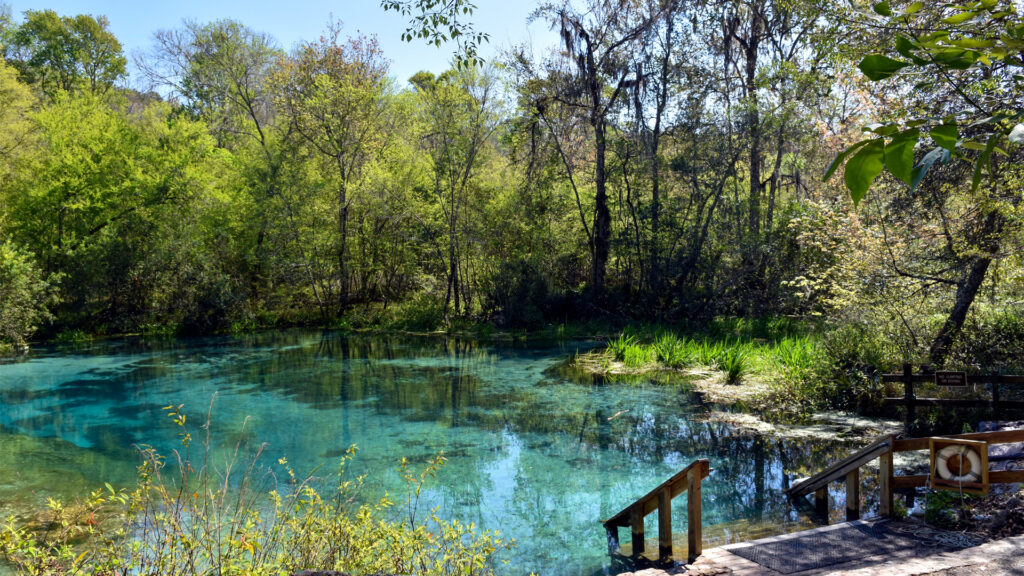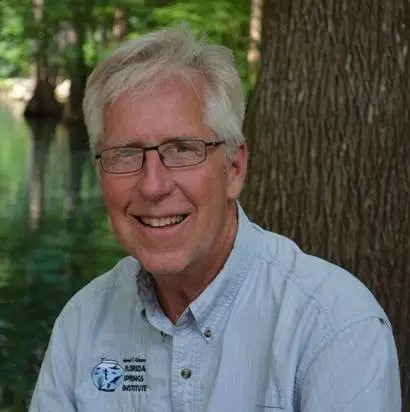By Robert Knight, Florida Springs Institute
I recently chanced upon a memorial for the extinct passenger pigeon. Located on a high bluff above the Upper Mississippi River in rural Wisconsin, this marker was dedicated by Aldo Leopold, one of the most famous American environmentalists.
In 1947 he proclaimed, “We meet here to commemorate the death of a species. We grieve because no living man will see again the onrushing phalanx of victorious birds, sweeping a path for spring across the March skies, chasing the defeated winter from all the woods and prairies of Wisconsin.”
This monument reminds the traveler “to treasure and conserve our limited natural resources” and to never forget the passenger pigeon’s tragic demise in 1914. A bird species that seemed to be limitless was doomed to extinction within a human lifespan by habit loss and overhunting.

Florida’s more than 1,000 artesian springs, the greatest concentration of large springs in the U.S. and possibly the world, have seemed “eternal” and “forever” since the beginning of Florida’s recorded history. With no deep wells and no fertilizer, our springs would still be pristine. But with a million wells and millions of acres of people and farms, Florida’s springs are a shadow of their former majesty.
Combined, Florida’s springs have lost over one third of their historic flows. And about 80% of all of Florida’s springs are severely polluted and biologically impaired by nitrogen from fertilizers and waste waters. And yet, Florida has laws that theoretically protect springs from excessive flow reductions and nutrient pollution.
The state’s regional water management districts are tasked by law to protect spring “water resource values” and to avoid “significant harm” due to reduced flows. These state agencies set regulatory minimum spring flow reductions to less than 5-10%. Yet, flawed groundwater flow models provide a smokescreen for these water protection agencies to allow farmers and developers to withdraw more than 30% of all spring flows.
When an “eternal” spring loses more than one third of its average flow, it is likely to stop flowing entirely during a prolonged drought when groundwater pumping is greatly increased. A non-flowing spring is biologically extinct.
What Marjory Stoneman Douglas once described as “bowls of liquid light” have in a single human lifespan been polluted by excessive nutrients, more closely resembling a Halloween haunted house filled with webs of filamentous algae and dark water. A polluted spring does not support native plants and wildlife typical of a healthy spring. It is technically dead.
The state agency mandated to protect Florida’s lakes, streams, beaches and springs is the Florida Department of Environmental Protection (FDEP). You may have seen their name recently in the news. FDEP’s bosses in the governor’s office are the same people who decided to put pickleball courts, golf courses and high-rise hotels in our award-winning state parks.

It is small wonder that Florida’s government in power is not fulfilling its promise “to treasure and conserve our limited natural resources.” Florida’s priceless artesian springs are far along the path to extinction. As so plainly stated on the Wisconsin passenger pigeon memorial, “… this species became extinct through the avarice and thoughtlessness of man.”
The governor’s state park boondoggle has been publicly defeated by the voices of millions of honest Floridians speaking with one mind and one voice. This is a lesson for all of us.
Our generation may be the last to witness and enjoy living springs. It is past time to restore and preserve what we have left of these unique natural resources. Our descendants will hate or thank us depending on how we respond to this crisis. We must leave them more than a plaque dedicated to extinct springs.
Robert Knight is a springs scientist and founder of the Florida Springs Institute located in High Springs. This opinion piece was originally published by the Orlando Sentinel, which is a media partner of The Invading Sea.
If you are interested in submitting an opinion piece to The Invading Sea, email Editor Nathan Crabbe at ncrabbe@fau.edu. Sign up for The Invading Sea newsletter by visiting here.




Thank you for this clarion cry. 125,000 folks agree with you and signed last campaign’s FloridaRighttoCleanWater.org petition. We need that to be one million signatures, so we have started our new 2024 campaign. An amendment to the state constitution would give us a fundamental right to clean water and strict scrutiny would apply to folks harming our waters. The good of the people of Florida when it comes to their water would supersede the permits for corporations to harm it and this could make a big difference in our springs, wetlands and all bodies of water in our state. It’s a difficult process. We need all water warriors to help collect petitions. So, we have an opportunity on Election day to collect lots of petitions at the polls. Please sign up and help. Our sign up is on our website, FloridaRighttoCleanWater.org. Give us a few hours or days … it might just save our springs.
Thank you,
Tiffany